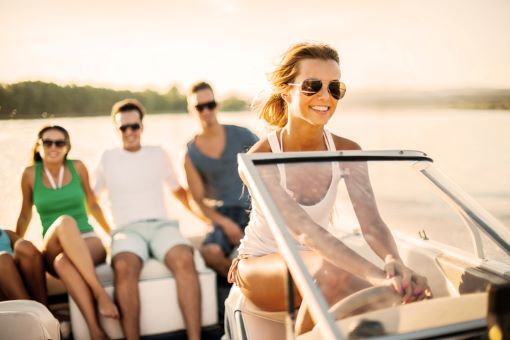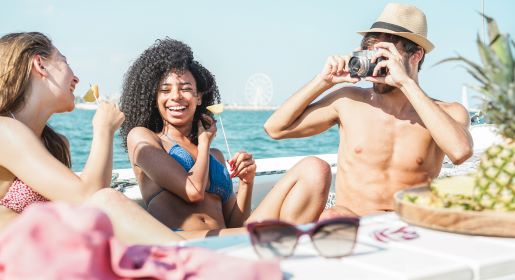Bow riding refers to passengers riding with their legs hanging over the side of the bow. In addition to being illegal, bow riding is dangerous. Keep ready, and we’ll explain why.
What is Bow Riding?
As we mentioned, bow riding refers to passengers riding with their legs dangling over the side of the boat’s bow. It’s dangerous because bow-riding passengers are significantly more likely to fall into the water.
Note that this doesn’t include bowrider boats designed with seats in the bow.
Why Is Bow Riding Dangerous?
Passengers who ride with their legs hanging over the bow are more susceptible to falling in the water. If the boat is in motion, this could result in bow riding accidents, leading to death or serious injury.
When boats are cruising at high speeds, movement is more dramatic towards the front of the boat. Even seated passengers suffer injuries from acceleration, deacceleration, and turns. This puts passengers who aren’t properly seated at an incredibly high risk of injury.
For this reason, bow riding is illegal in many states and results in hefty fees and citations.
If you're the boat’s captain, remember that it’s your job to ensure every passenger has a proper seat. If you're a passenger, sit in your designated seat as instructed by the captain.
What Should Boat Passengers Do Instead?
By now, you understand that bow riding is a major boating no-no. However, what should passengers do instead? To get you started, here are some suggestions to ensure you have a safe and enjoyable boating experience:
1. Listen to the Captain
As we mentioned, the boat’s captain is responsible for everyone’s safety on board. And as a passenger, it’s your job to listen to them.
Instead of riding the bow, sit wherever the captain instructs you. Additionally, ensure you obey all other safety orders. These instructions include wearing your life jacket and staying seated when the boat is in motion.
Read Next: Life Jackets, Vests & PFDs
2. Know Where and When to Sit
It is your responsibility as a boat passenger to find a suitable seat. Or, you should sit where your captain directs you. Once you find that spot, remain seated when the boat is in motion – especially if you’re navigating rough waters.
3. Play Safe
Spending the day on the water is fun for everyone involved, but it's important to keep safety in mind.
That said, refrain from standing on boat seats, playing with boat controls, or pretending to push someone overboard. Not only are these activities distracting, but they’re incredibly dangerous to both yourself and others.
4. Respect the Boat
As a boat passenger, you must treat the boat, the captain, your fellow passengers, and the water respectfully. Obey any instructions you’re given without protest. Additionally, don’t throw litter in the water and/or loose items around the boat.
Bow Riding FAQs
Below are the answers to some of the most frequently asked questions about bow riding:
What does riding the bow mean?
Bow riding usually means allowing people to sit on the bow of a vessel. However, it can also refer to people riding in places that are off limits. This includes the gunwale, transom, seat backs, seats on raised decks, and any other place where they risk falling overboard.
Why is it called a bowrider boat?
Bowrider boats are designed with an open bow and special bow seating. Many newer models have a walk-through windscreen that offers direct access to the bow seating from the cockpit. And no, bow riding usually doesn’t apply to passengers sitting in those designated seating areas.
Is it legal to ride on the bow of the boat?
The short answer? No. Most states forbid passengers to ride on the boat’s bow, and captains who allow it are given citations. And as you can imagine, those citations come with a substantial fee.
The Bottom Line
Ensure a safe and fun boating season by knowing when and where to sit. Never participate in bow riding, and instead respect the captain and the water.
By following boating best practices, you can rest assured that an enjoyable and stress-free boating season is on your horizon.

